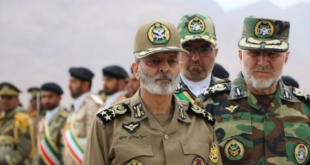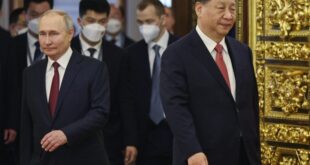ISIS cells present in Idleb have not responded to campaigns by HTS, according to Athr Press.
The General Security Service of Hay’at Tahrir al-Sham-al-Nusra (HTS) has issued a statement refuting ISIS’ claim that they were responsible for targeting their leader, Abu al-Hussein al-Husseini al-Qurashi, in rural Idleb.
According to the Lebanese newspaper An-Nahar, in recent years, HTS has continuously conducted security campaigns against ISIS cells in the areas under its control. These campaigns have resulted in the death and arrest of numerous leaders and members of the organization, including high-ranking officials. HTS has been transparent in announcing the outcomes of these campaigns.
Conversely, ISIS cells present in Idleb have not responded to HTS campaigns with any counteraction. It seems that there was an implicit understanding between the two parties. This arrangement suggests that ISIS cells refrained from engaging HTS members and leadership, possibly in exchange for refuge in Idleb. This dynamic aims to prevent any security disruptions to HTS authority.
The newspaper posits that HTS’s leader, Abu Muhammad al-Julani, did not permit ISIS cells to seek shelter in Idleb out of sympathy for them. Instead, it is believed that he strategically planned to exploit their presence. He aimed to forge closer ties with certain international intelligence agencies by positioning himself as an operative fighting against a globally recognized terrorist organization.
On August 3, ISIS released an undated recording through channels associated with it, claiming that the killing of their leader, Qurashi, was orchestrated by members of HTS in the Idleb countrryside. This announcement contradicts the account provided by Turkish President Recep Tayyip Erdogan on April 30, wherein he asserted that Turkish intelligence had eliminated Qurashi in a Northern Syrian operation.
Why do ISIS leaders hide in HTS’ areas of influence?
Abbas Sharifa, a specialist researcher in Islamic group dynamics, disclosed to The New Arab that there are multifaceted reasons behind the concealment of the group’s leaders in northwestern Syria. He highlighted the region’s status as an area of displacement and refuge, affording the organization’s leadership the opportunity to blend into the local populace.
Sharifa expounded on the group’s clandestine initiatives, citing the establishment of covert factions and cells designed to operate within northern Syria against HTS and the National Army, even extending their operations into Turkey. He underscored the prevailing precarious security landscape in the region, which hampers security agencies from detecting their covert activities.
Northern Syria serves as a logistical hub for the group, exploiting remittance networks and unmonitored offices to receive financial support. Sharifa elaborated, noting that the northwest of Syria functions as an underground arms market, prompting the group to procure weaponry from this region.
Conversely, researcher Yassin Jamoul contended that ISIS leaders do not primarily inhabit northern Syria but rather are situated in areas controlled by HTS. He argued that these factions thrive exclusively in tumultuous and conflict-ridden environments, which provide an ideal backdrop for their expansion.
Jamoul emphasized that the regions under HTS’s jurisdiction in northwestern Syria are the most secure zones for the organization’s leadership. He added that ISIS and Al-Nusra were previously intertwined and originated from the same source, and now, ISIS leaders exploit the discontent within the jihadist milieu due to Abu Muhammad al-Julani’s strategic shifts, even securing assistance from within HTS’s ranks.
Jamoul voiced his belief that HTS’s leadership is cognizant of the presence of ISIS leaders within their controlled areas and is capitalizing on this knowledge. He suggested that reports of an individual’s demise within their ranks are often manipulated for personal gain, despite their whereabouts having already been exposed.
 Eurasia Press & News
Eurasia Press & News




